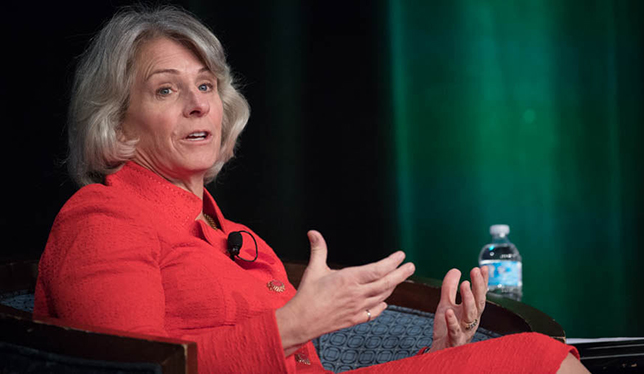At this year’s Gender Summit, an international event held in Canada for the first time in 11 years, academics, policy-makers and corporate leaders discussed how to foster gender equity and broader diversity in organizations. Hosted by the Natural Sciences and Engineering Research Council and the Fonds de Recherche du Québec, the three-day event held in Montreal in early November placed an additional focus on gender parity in the STEM fields. In engineering, for example, where women represent just under 17 percent of newly licensed engineers, Engineers Canada is working with provincial regulators to increase that representation to 30 percent by 2030.
At universities, there are two career tracks – academic and administrative – in which to promote greater success of women, visible minorities and under-represented groups, said the University of Calgary’s president, Elizabeth Cannon, in a panel discussion on creating diverse and inclusive senior leadership teams and boards. (In Canada, 24 percent of university presidents and 40 percent of board chairs are women, according to Universities Canada.)
“When we’re looking at programs like the Canada Research Chairs and other types of high-impact programs, that’s where [universities] certainly have to work together collectively,” said Dr. Cannon. Canada’s universities will need to meet diversity targets for CRCs by 2019 and recently approved a set of “inclusive excellence” principles to advance diversity, equity and inclusion on their campuses. “It’s not a quick fix,” she said. “I think what we’re looking at is ensuring individuals have a very strong career path within our organizations, that when we attract women, for example, into our academic positions – they are part of a team.”

Hilary Lappin-Scott, senior pro-vice-chancellor of Swansea University in the U.K., credits the Athena SWAN charter (an evaluation and accreditation program to enhance gender equity in the U.K.), as well as clear expectations at her institution in terms of promotions at the most senior levels, for encouraging more women to apply for and receive promotions. Depending on the subject area, the expectations describe “the research funding we’ll have expected you to have attracted, the size at minimum of the PhD and cohort of students you’re supervising, and the expectation for research output. It’s very, very clear – there’s nowhere to hide and there’s no room for any misunderstanding,” Dr. Lappin-Scott said.
She added that it’s important for institutional leaders to show “how the needle is being moved” and to celebrate the contributions of all members within an organization. “What’s the imagery around your organization? You could very easily pass on your unconscious biases by not reflecting the diversity and talent and achievement within your organization. It’s incredibly off-putting.”
With respect to diversity targets within organizations, panelists in both business and academia agreed upon their effectiveness, whether they are framed as “expectations” or hard quotas. They also emphasized the necessity of top-level support and leadership in any organization’s diversity strategy. “I think what’s really important is there’s a level of transparency … this is about accountability in a very public way,” said Dr. Cannon. “And putting targets around underrepresented groups and ensuring that they are supported within our organizations I think is totally appropriate.”
“Anything that’s important to the business has goals and objectives,” said Zabeen Hirji, special adviser and former chief human resources officer at the Royal Bank of Canada. About 10 years ago, the bank created staffing goals wherein one in two new executives and senior managers would be a woman and one in five would be a visible minority. “Had we not put those goals in place, we would have backslid. There really is in my view little question around that,” Ms. Hirji said.
When it comes to the question of whether setting diversity targets puts less-qualified people in positions, she added, “That happens anyway. And it should happen – if we get it 100 percent right we’re not stretching our people enough, we’re not taking the bets on people and that’s not a good talent strategy.”